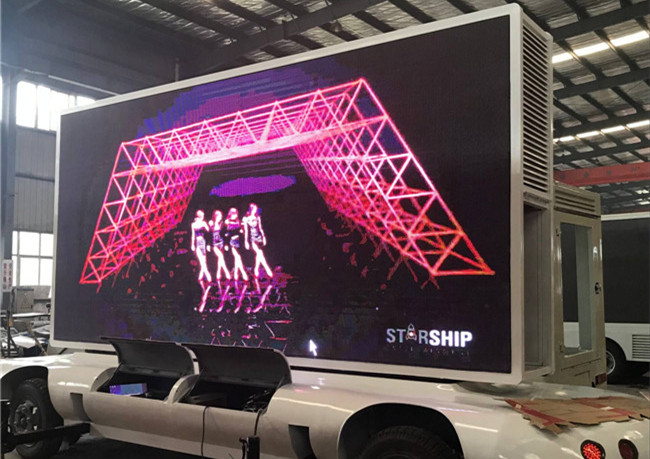Causes Of Light Pollution Of LED Display
Solution To Light Pollution Caused By LED Display
LED display is extensively used in display-related industries such as outdoor advertising because of its advantages including high luminance, wide viewing angle and long life. However, the high luminance leads to light pollution, which is a defect of LED display. The light pollution caused by LED display is internationally divided into three categories: white light pollution, artificial daytime and color light pollution. Light pollution prevention of LED display should be taken into consideration during the design process.

First of all, in order to prevent and control light pollution, let’s summarize the causes of its formation, generally for the following reasons:
The luminance of LED display is the major cause of light pollution. Following safety protection methods are conducive to solving light pollution problem efficiently.
We know that the luminance of the environment varies greatly from day to night, from time to time and from place to place. If LED display luminance is 60% greater than ambient luminance, our eyes will feel uncomfortable. In other words, the screen pollutes us. Outdoor luminance acquisition system keep collecting ambient luminance data, according to which the software of display screen control system automatically work out the appropriate screen luminance. Research shows that, when human eyes are used to the ambient luminance of 800cd per square meter, the luminance range that human eyes be able to see is from 80 to 8000cd per square meter. If object’s luminance is beyond the range, the eyes need several seconds’ adjustment to gradually see it.
The control system of ordinary LED displays has a color depth of 8bit so that the low gray level colors and color transition areas look rigid. This also result in the maladjustment of color light. However, the control system of new LED displays has a 14bit color depth that significantly improves color transition. It makes colors subdued and prevent people from feeling the light uncomfortable when looking at the screen. Learn more about the grayscale of LED display here.
There should be an experience-oriented plan based on the connection between viewing distance, viewing angle and screen area. Meanwhile, there are specific design requirements for viewing distance and viewing angle due to image study. An LED display should be reasonably designed, and those requirements should be met as much as possible.
As a kind of public media, LED displays are used to show information including public service announcements, advertises and instructions. We should screen contents that meet the demand of public to avoid their rejection. This is also an important aspect in combating light pollution.
The severe light pollution caused by outdoor displays are too bright and affects the lives of the surrounding residents to some extent. Therefore, the relevant departments should issue LED display luminance adjustment standards to strengthen light pollution control. The owner of the LED display is required to actively adjust display’s luminance output according to the ambient luminance, and high-brightness output in the dark night is strictly forbidden.
Human eyes have different visual perception towards different wavelengths of light. Since complex human perception towards light cannot be measured with “brightness”, irradiance index can be introduced as the criterion for safe visible light energy. Human feelings toward blue-ray cannot be taken as the sole criterion in measuring light’s effect on human eyes. Irradiance measuring equipment should be introduced and it will collect data to response the influence of blue light output intensity on visual perception. The manufacturers ought to reduce blue-ray output while ensuring the screen’s display functions, in order to avoid doing harm to human eyes.
Effective control of light pollution caused by LED display needs reasonable arrangement of the light from the screen. To avoid hard light in partial area, the light radiated by LED display should be spread evenly in visual field. It requires strict restriction on the direction and scale of light exposure in the production process.
Safety precautions should be marked on the operating instructions of LED display products, focusing on the correct adjustment of screen luminance and the harm that may be caused by looking at the LED screen for a long time. If the automatic luminance adjustment system runs out of order, the brightness can be adjusted manually. In the meantime, safety measures against light pollution shall be popularized to the public so as to enhance their self-protection ability. For instance, one cannot stare at the screen for a long time and need to avoid focusing on the details on the screen, otherwise the light of LED will focus on the eye ground and form bright spots, and sometimes it will lead to retinal burn.
In order to ensure the performance of LED display products, it is necessary to step up the test of products’ luminance in the indoor and outdoor environment. During the indoor process, testing personnel have to watch the display at close range to see if there are any problems with the details, wearing dark sunglasses with brightness attenuation of 2 to 4 times. While in the outdoor process, the brightness attenuation should be 4 to 8 times. Testing personnel must wear safety guards to carry out the test, especially in the dark, to be kept away from hard light.
In conclusion, as a kind of light source, LED displays inevitably bring about light safety problems and light pollution in operation. We should take reasonable and feasible measures to eliminate light pollution caused by LED display to effectively prevent LED displays doing harm to human bodies, on the basis of comprehensive analysis of its light safety problem. Therefore, in addition to protect our health, it can also help broaden the application range of LED display.